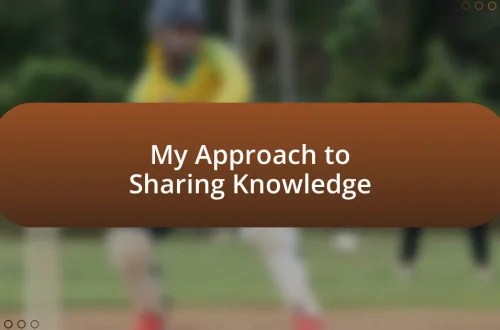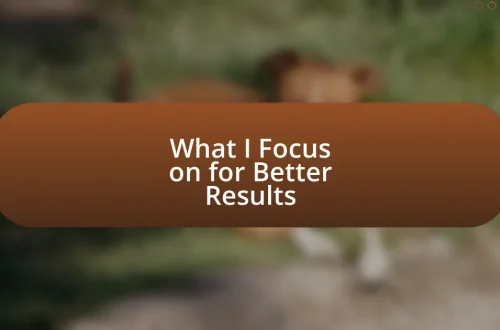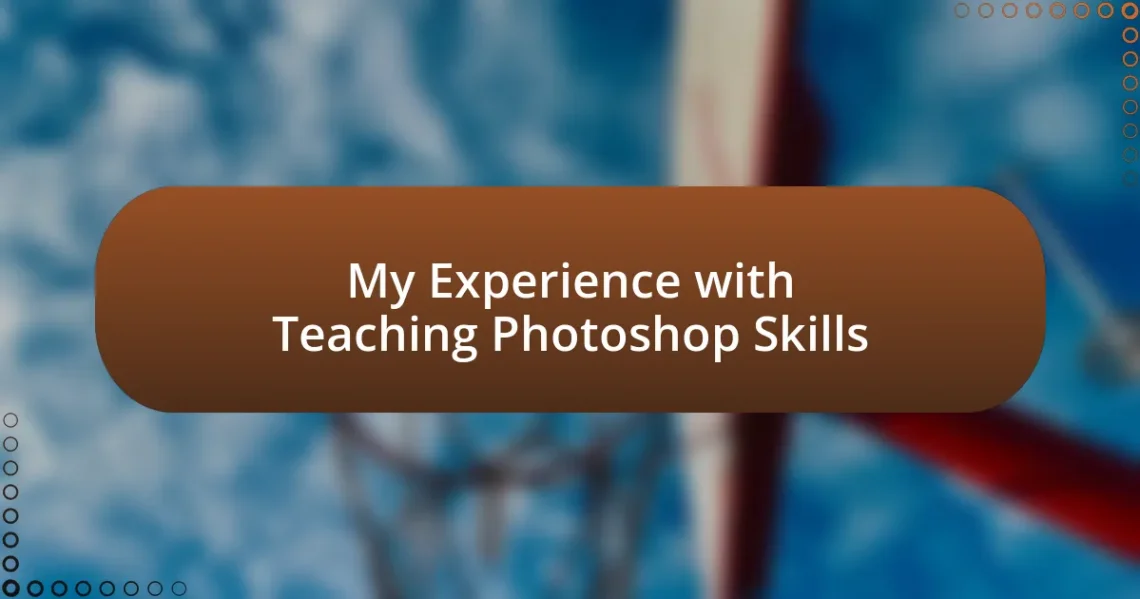
My Experience with Teaching Photoshop Skills
Key takeaways:
- Teaching Photoshop effectively involves understanding individual student goals and tailoring instruction to their specific needs.
- Incorporating hands-on learning techniques, such as mini-workshops and peer critiques, enhances student engagement and fosters a supportive classroom environment.
- Real-world projects, like designing promotional materials or collaborating with local charities, connect creative learning to practical applications, enriching the overall educational experience.
- Ongoing feedback and digital portfolios serve as valuable assessment tools, helping students reflect on their progress and articulate their understanding of design principles.
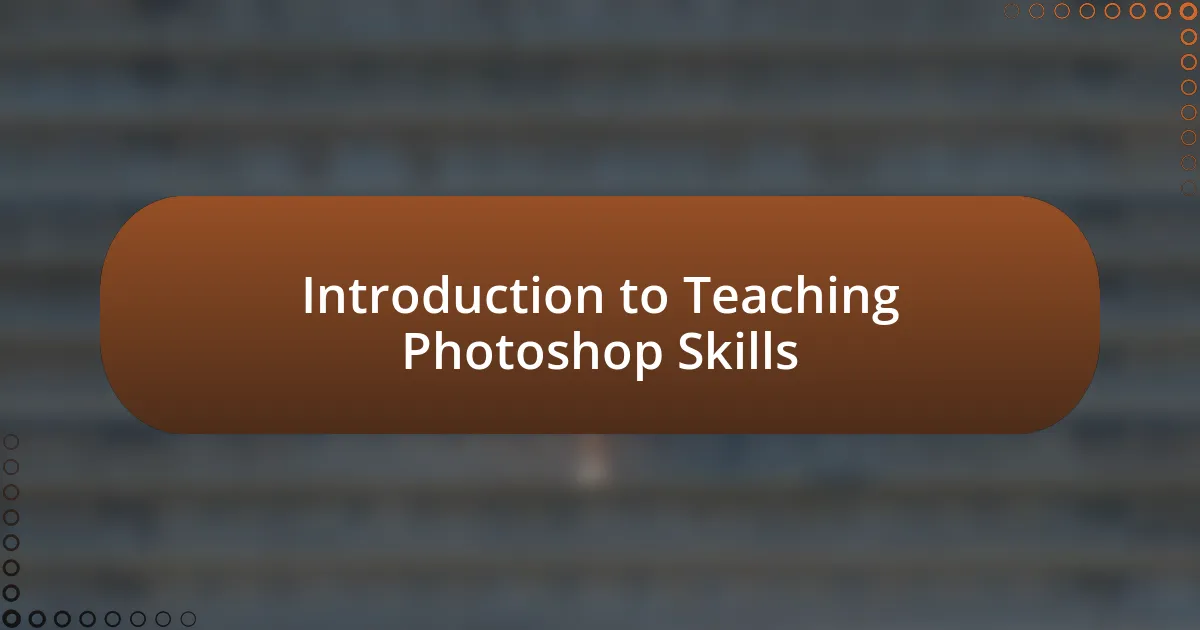
Introduction to Teaching Photoshop Skills
Teaching Photoshop skills is not just about sharing technical knowledge; it’s about igniting creativity in others. I remember my first experience in the classroom, watching students’ eyes light up as they discovered how to transform simple images into stunning graphics. It struck me how powerful these skills are, enabling individuals to express their unique visions.
One of the challenges I faced was understanding how to break down complex processes into digestible steps. Have you ever tried to explain a skill you’ve mastered to someone who’s just starting? It can be daunting. My approach evolved when I found that sharing relatable examples from my own learning journey made the lessons more tangible for my students.
I’ve learned that fostering a supportive environment is crucial. When someone feels safe to make mistakes, they’re more likely to embrace the learning process. I recall a student who struggled with layers and effects, feeling frustrated at first. After a few encouraging conversations and hands-on guidance, that same student created a breathtaking design that filled me with pride. Those moments remind me why teaching Photoshop is such a rewarding experience.
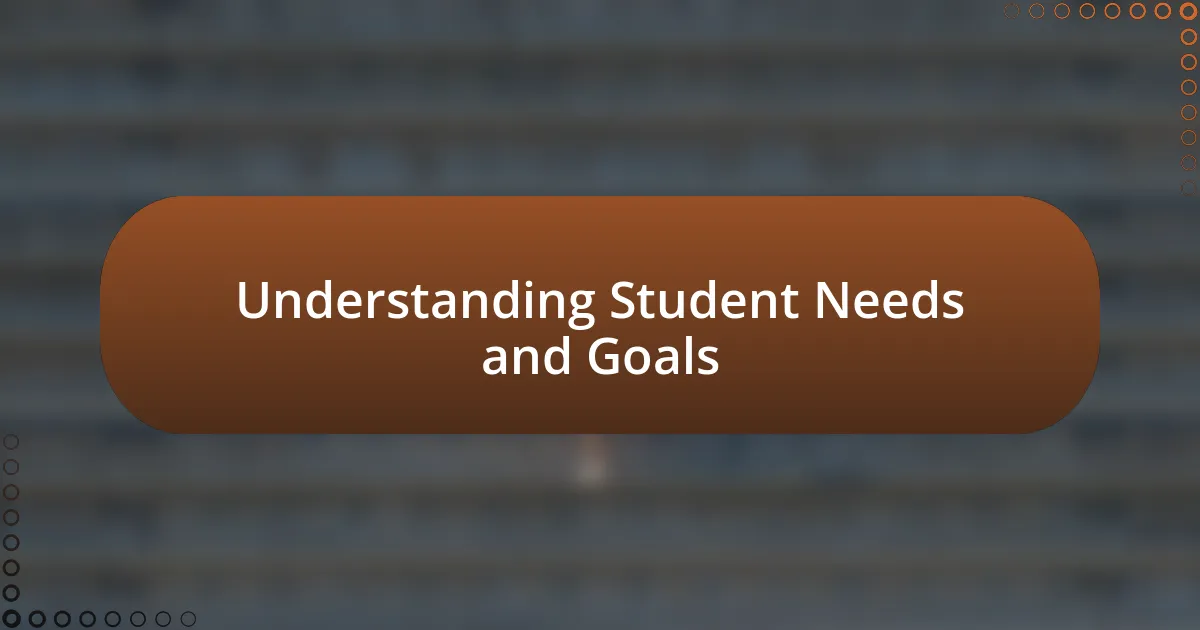
Understanding Student Needs and Goals
Understanding a student’s needs and goals is fundamental in teaching Photoshop. Early in my experience, I realized that not every student comes in with the same level of familiarity with the tool. For instance, I had one student who was aiming to enhance her photography skills for a personal project, while another aimed to create graphics for his small business. Recognizing these individual goals helps tailor my instruction, ensuring each student walks away feeling accomplished.
Sometimes, I might ask students to share their specific aspirations within the realm of Photoshop to better understand their needs. I remember during a session, a student mentioned his passion for digital illustration. This insight allowed me to adjust my lessons to include relevant techniques that supported his personal interests. It was incredibly rewarding to witness his progress, as he transformed his original sketches into vibrant digital pieces.
Additionally, ensuring that students feel comfortable expressing their artistic ambitions creates a more engaging learning atmosphere. In one workshop, I encouraged students to set their own project goals. This not only sparked their creativity but also fostered a sense of ownership in their learning journey. Watching them tackle projects that truly resonated with their personal experiences reinforced just how critical it is to honor and understand each student’s unique vision and objectives.
| Student Goals | Teaching Approach |
|---|---|
| Photography Enhancement | Focus on photo editing techniques |
| Graphic Creation for Business | Teach branding essentials and design principles |
| Digital Illustration | Introduce tools and techniques for illustrators |
| Creative Experimentation | Encourage project-based learning |
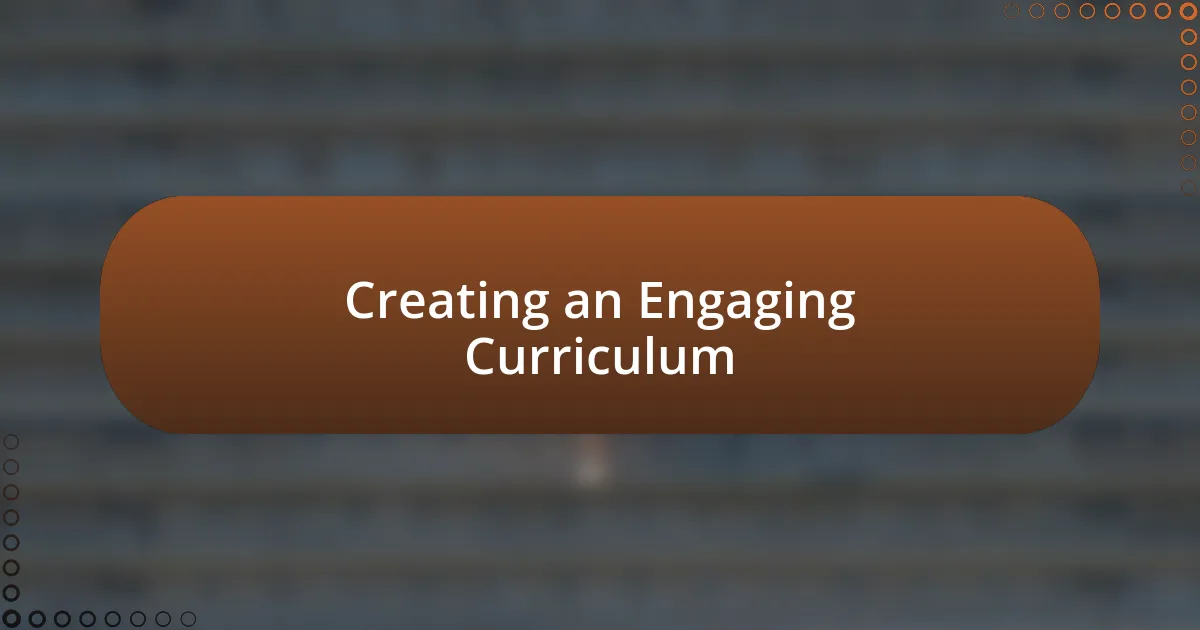
Creating an Engaging Curriculum
Creating an engaging curriculum for teaching Photoshop is all about making connections. I’ve learned that incorporating real-world projects keeps students invested. For example, I once assigned a project that involved designing a poster for a local event. This not only motivated my students but also gave them a taste of practical application—seeing their designs displayed in the community was a thrilling moment that reinforced their excitement about mastering Photoshop.
To further enrich the curriculum, I believe it’s essential to integrate diverse teaching methods. Here’s a quick glance at some strategies I’ve found effective:
- Project-Based Learning: Assign projects that align with students’ interests, allowing for personal expression.
- Collaborative Work: Encourage students to partner up for assignments, fostering a sense of teamwork and community.
- Hands-On Workshops: Conduct classes where students can practice techniques during the lesson, reinforcing skills in real time.
- Feedback Sessions: Schedule moments for constructive critiques, which help students learn from each other and refine their work.
- Guest Speakers: Bring in professionals who use Photoshop in their careers to highlight real-world applications and inspire students.
By blending these methods, I strive to create a dynamic learning environment that not only teaches technical skills but also nurtures creativity and self-expression.
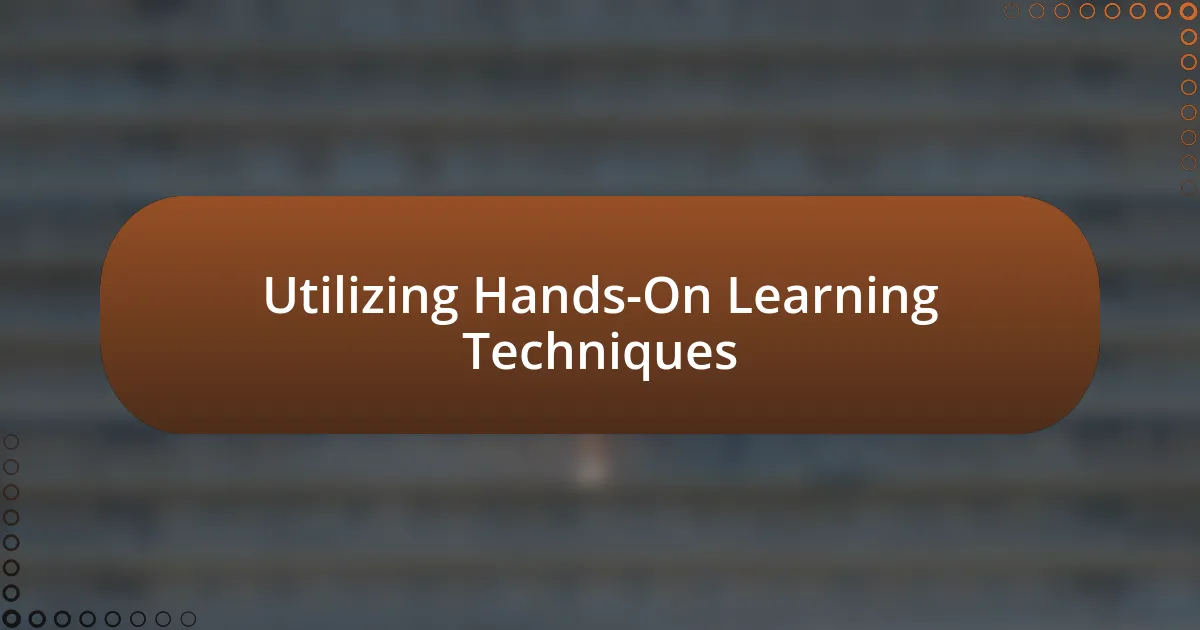
Utilizing Hands-On Learning Techniques
Hands-on learning techniques have been game-changers in my teaching approach for Photoshop. I remember a class where students created digital collages using their own photos. Watching their faces light up as they experimented with blending modes and filters was a joyful reminder of why I love teaching—those moments of discovery are simply priceless.
One of my favorite strategies has been to host mini-workshops within the curriculum. Instead of lecturing about layers, I guide my students through an interactive exercise where they create a layered composition from scratch. I often ask them, “What happens when you change the order of these layers?” The collective excitement as they uncover the mysteries of layer management is something I’ve come to cherish.
Feedback is another crucial aspect of hands-on learning. After one project, I arranged a peer critique session where students showcased their work. It was fascinating to see how they expressed their emotions about each other’s designs—some felt inspired while others grappled with constructive criticism. This exchange not only deepened their understanding of Photoshop but also fostered a supportive community, which I find incredibly rewarding as an educator.
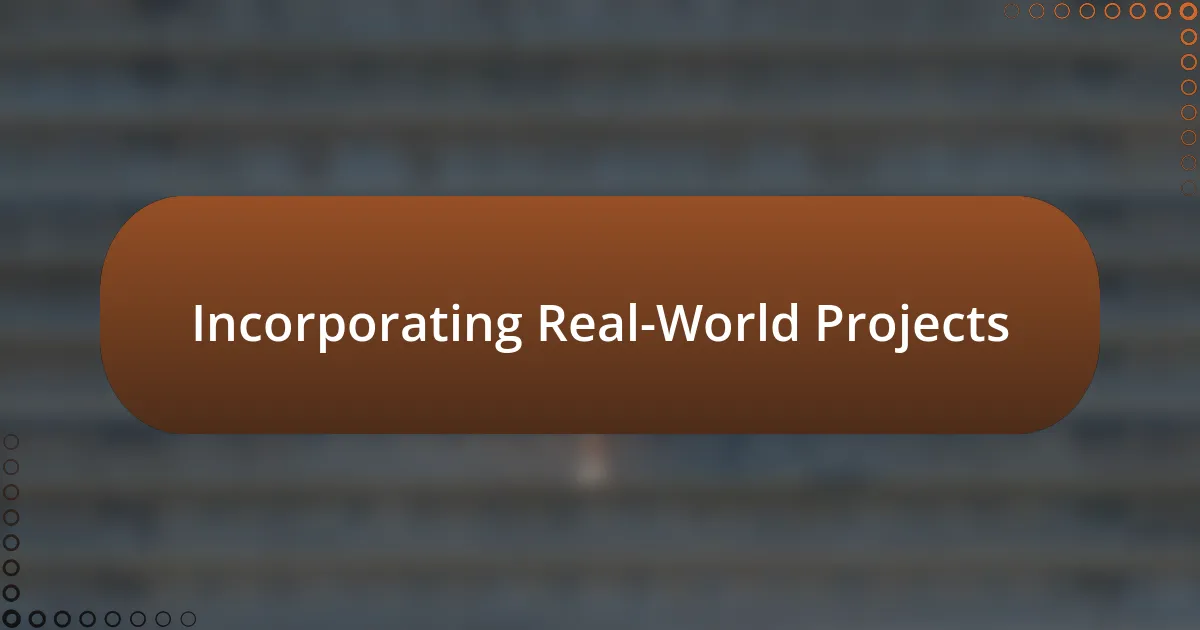
Incorporating Real-World Projects
Incorporating real-world projects into my Photoshop curriculum has transformed the teaching experience. There was this one time when I assigned a project where students had to design a promotional poster for an imaginary event. The thrill of combining their creativity with practical skills—like typography and layout—was evident, and I couldn’t help but smile as they dove into the task with genuine enthusiasm. Have you ever seen someone take ownership of their work like that? It’s a powerful feeling.
Another impactful project involved collaborating with a local charity to create digital graphics for their social media campaign. The students relished the opportunity to contribute to a cause they cared about while honing their Photoshop skills. I was amazed by the sheer amount of passion they poured into their designs. It wasn’t just about mastering tools; they felt a real connection to their community, which made the learning experience truly unforgettable for me as well.
One thing I’ve noticed is that real-world projects often spark unexpected conversations among students. During a project where they redesign a magazine cover, I overheard a group discussing color theory and how it affects mood. This connection between technical skills and emotional responses fascinated me. It conducted a deeper understanding of design principles that goes beyond the software—something I genuinely find enriching as an educator and a designer.
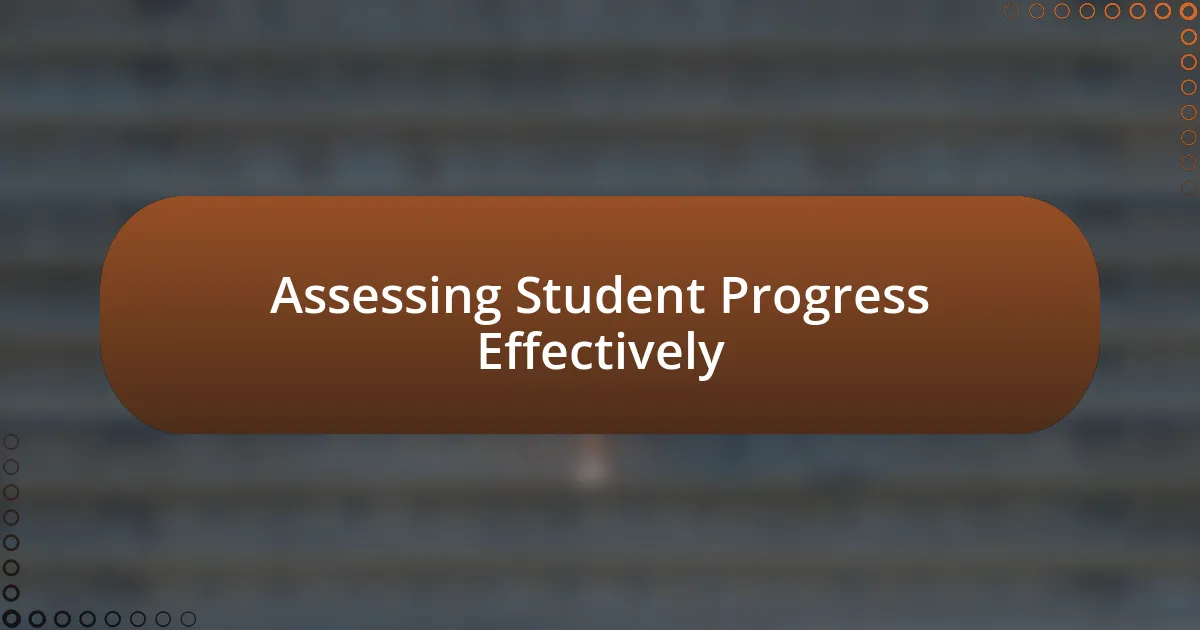
Assessing Student Progress Effectively
One of the best methods I’ve found for assessing student progress is through ongoing feedback. In my classes, I often hold informal check-ins where students share their work in progress. This creates a low-pressure environment, allowing them to voice their challenges and thoughts. I remember one student who was struggling with layering techniques. Through our discussion, I was able to guide them to a breakthrough moment, watching their confidence surge as they mastered a tricky concept. Isn’t it rewarding to witness those “aha!” moments?
Additionally, I like to incorporate peer reviews into the assessment process. When students critique each other’s projects, I observe a unique shift in their understanding. They begin to articulate their thoughts clearly and recognize design principles in others’ work. I recall a session where two students, initially hesitant, ended up engaging in a lively debate over composition styles. It’s remarkable how discussing another’s project can deepen one’s own learning, isn’t it?
Finally, I find that digital portfolios are an excellent way to track student development over time. Encouraging students to curate their best work helps them reflect on their journey. It’s fulfilling to see them recognize their growth, especially when they compare their early projects with their latest masterpieces. How do you feel about the idea of building a narrative around their skills? It’s like creating a visual story of their progress, which feels incredibly meaningful both for them and for me as their instructor.


